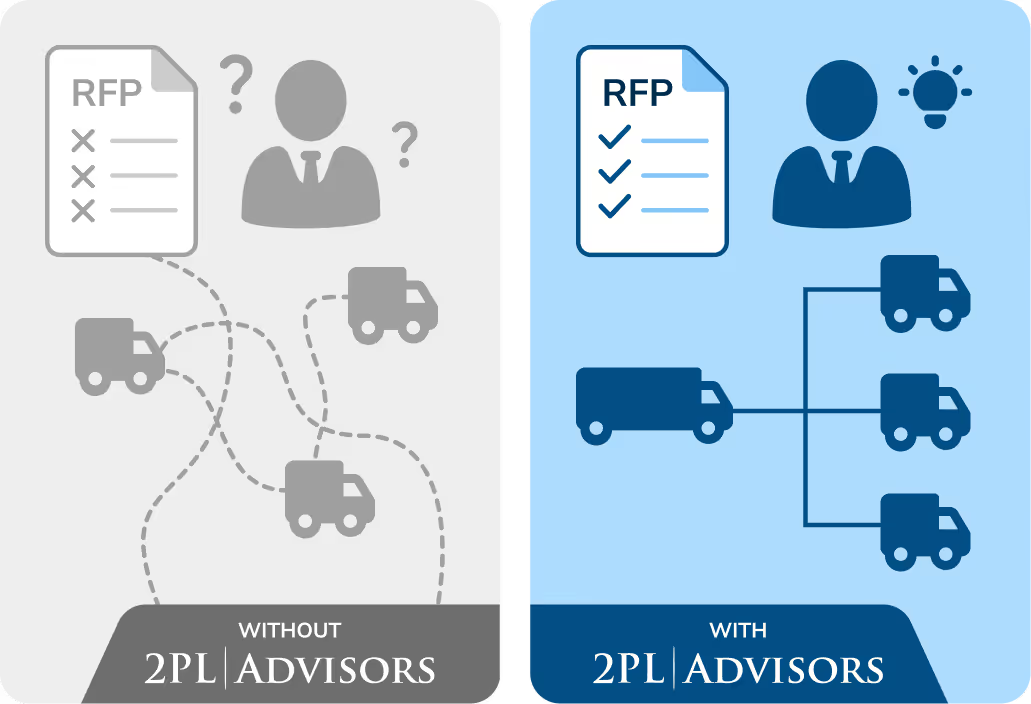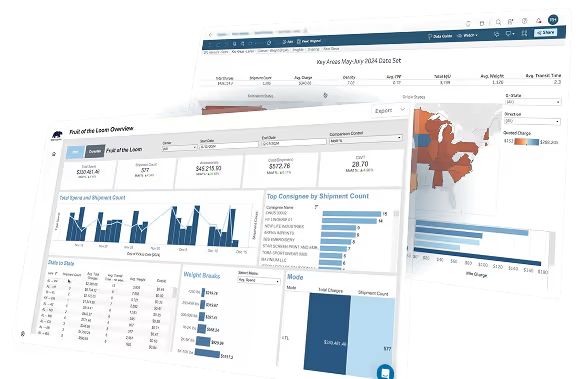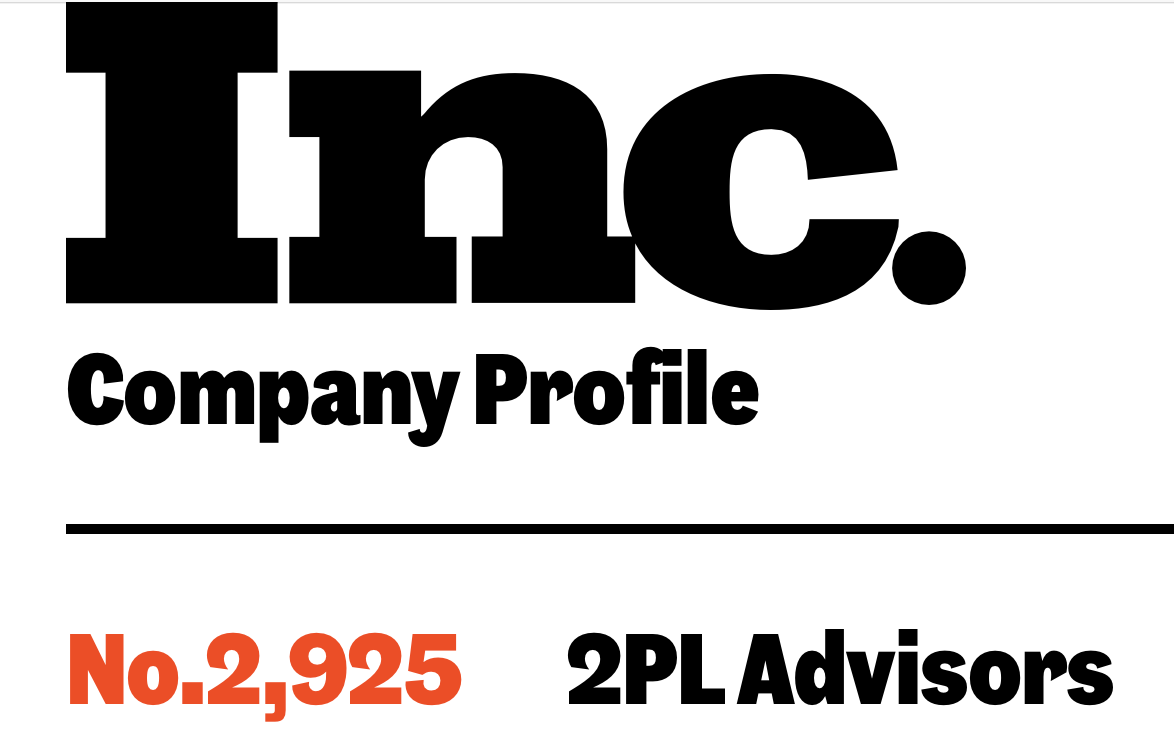What is an LTL RFP?
Stay ahead in freight and supply chain with expert tips, industry news, and deep dives from the 2PL Advisors team

Carrier recommendations
Tailored to your needs and lanes.
Onboarding support
For a faster and easier setup process.
No cost to you.
Our clients pay nothing for our services.

In the LTL space, we often say that the T stands for “technical.” Compared to the straightforward pricing structures of other trucking modes, LTL pricing structures involve several factors such as density, discounts and minimums, base rates, and accessorials amongst other things – there are just many details to consider. However, with added complexity comes added opportunity when negotiating new pricing. Each shipper’s LTL pricing can be customized, negotiated, and contracted through an RFP (request for proposal), a process where carriers bid on a client’s freight in order to win or maintain business. However, running an RFP activity requires knowledge, attention to detail, deadlines and a deep understanding of the nuances that are often overlooked by shippers and even 3PLs. As advisors, we are here to show the value of our LTL RFP services by walking through this process from start to finish.
An RFP activity could be done for many reasons: shippers may be looking to move away from a 3PL or other provider in order to establish direct relationships with carriers. They may be looking to create new partnerships or reevaluating current incumbent carriers. Another objective may be to standardize pricing structures across an ideal, optimized carrier network and align renewal dates. Certainly the most common goal is to drive cost savings.
When compiling an RFP, the first and most essential component is the client’s shipping data. In order to price accordingly, the RFP needs a complete snapshot of the business: the greater the time frame, the better. 90 days is generally considered the minimum, though for seasonal shippers, at least a year’s worth is recommended. This data set introduces the carrier to the business, highlighting key lanes and monthly volumes, shipment characteristics such as weight, pallet count, dimensions, density, consignees, freight class, accessorials, detailed shipping and receiving locations – the more data points the better. Because of this, the data set must be as accurate as possible, which usually requires a deep dive into the information and cleansing of the data: one of the many services that we provide here at 2PL.
The data set and supporting documentation go into an RFP packet, which will be provided to the carriers participating in the bid. This packet summarizes the business profile and outlines the parameters of the RFP, such as the base rate to use, most commonly something standardized such as Czarlite, the fuel schedule, accessorials, anything and everything that is going to be contracted.
At 2PL Advisors, we work to create custom solutions for our clients, recommending carrier partners based on the freight profile and service needs. Using the information provided, we curate a unique list of bid participants, usually a combination of both incumbent carriers that the client already works with as well a new carrier options that are deemed to be a good fit for the business. Once the RFP packet and participant list has been approved it is sent out to the carriers and the RFP timeline begins, usually a 6-8 week process.
Once proposals are received, so begins the lengthy and detailed process of loading and running all carrier rates, incorporating FAK’s, accessorial charges, net charges, fuel charges, high cost delivery areas, direct and indirect points. After a series of detailed cost analyses and carrier negotiations, we then compile a few different carrier network scenarios and present the results to the client—while we always offer our recommendations, ultimately the final decision is in the client’s hands. Once a scenario has been selected, we assist with tariff publication, contracts, integrations, onboarding, and continued check-ins even after the RFP is completed. The support continues with a client dashboard displaying all carrier data and metrics.
Overall, while the process itself is straightforward, the best LTL RFPs require significant attention to detail and a high level of expertise to get the most out of the activity. This overview covers the basics, however there are many other aspects such as analyzing FAK structures, zip-specific lane considerations, carrier feedback and negotiations, etc. As advisors, we can manage the entire RFP activity from beginning to end, all direct to carrier, taking the pressure off and connecting the right shippers with the right carriers, all at no cost to the shipper.
Find out more about our LTL RFP Management here: https://www.2pladvisors.com/ltl-rfp-management
Request Demo
More Articles

Become more strategic. Save time. Save money.
With expert analysis and carrier connections, we design a transportation network that can perform better for you.




